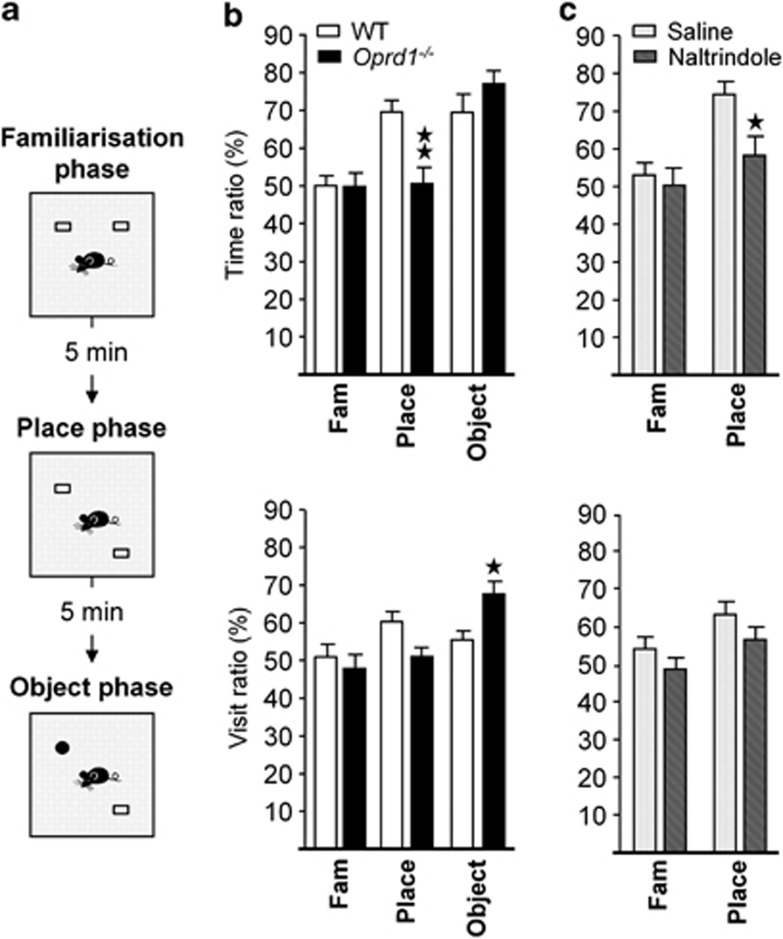Figure 1.
Genetic or pharmacological inactivation of delta opioid receptors impairs object place recognition. (a) Schematic representation of the protocol. (b) In the novel object recognition task, Oprd1−/− mice fail to display preference for the displaced object during the place phase, as shown by their low time ratio (percent time exploring displaced vs still object). In contrast, mice approach novel object more often during the object phase, as indicated by their high visit ratio (percent number of visits to novel vs familiar object). (c) WT mice treated with naltrindole (0.3 mg/kg) display a similar deficit as Oprd1−/− animals in recognizing a displaced object. Object preference is expressed as a percentage of time spent exploring (time ratio) or visits (visit ratio) to novel/displaced object vs unmoved/familiar object (mean±SEM). 1 star: p 0.05; 2 stars: p 0.01 (one-way analysis of variance).

